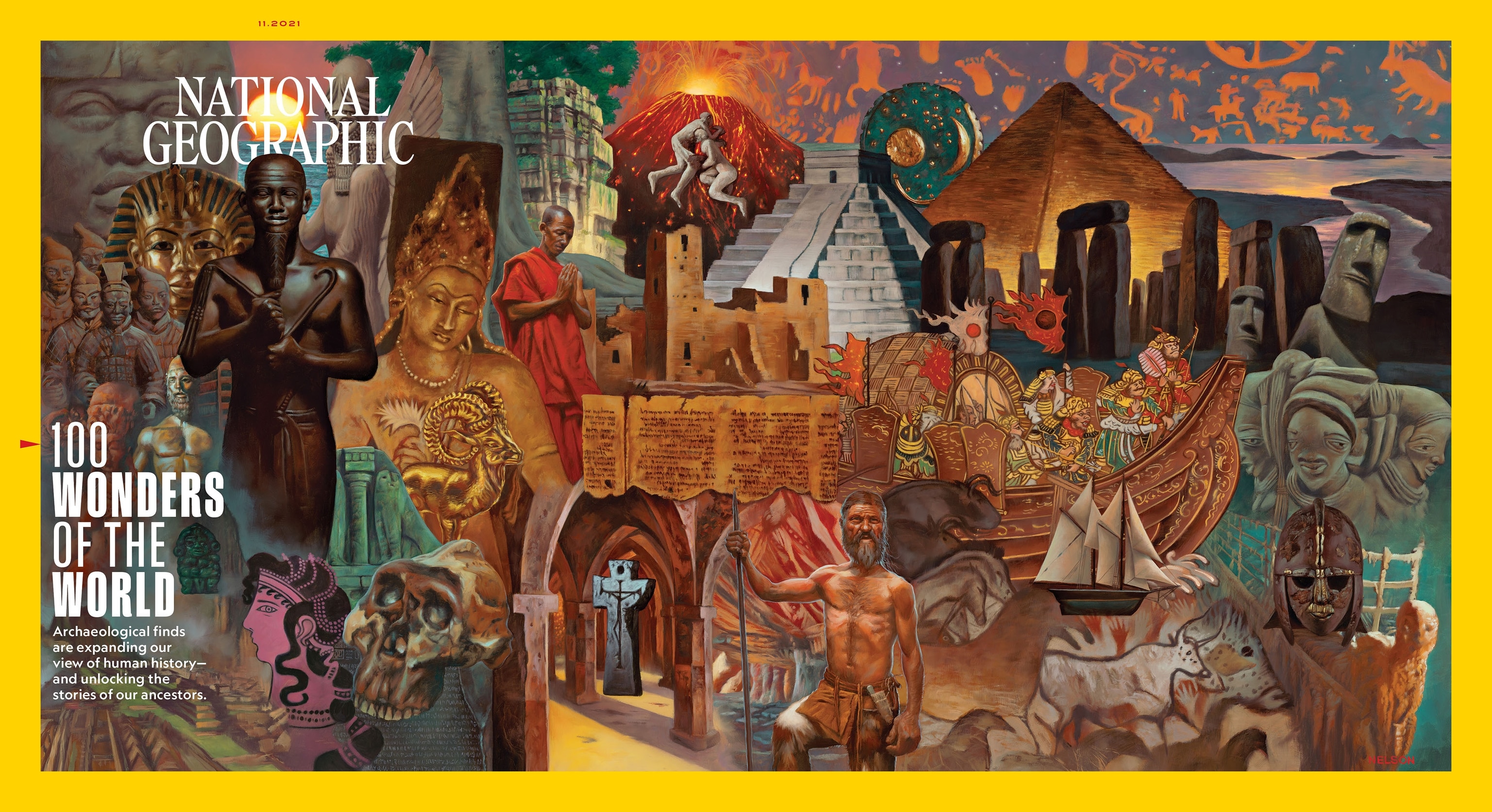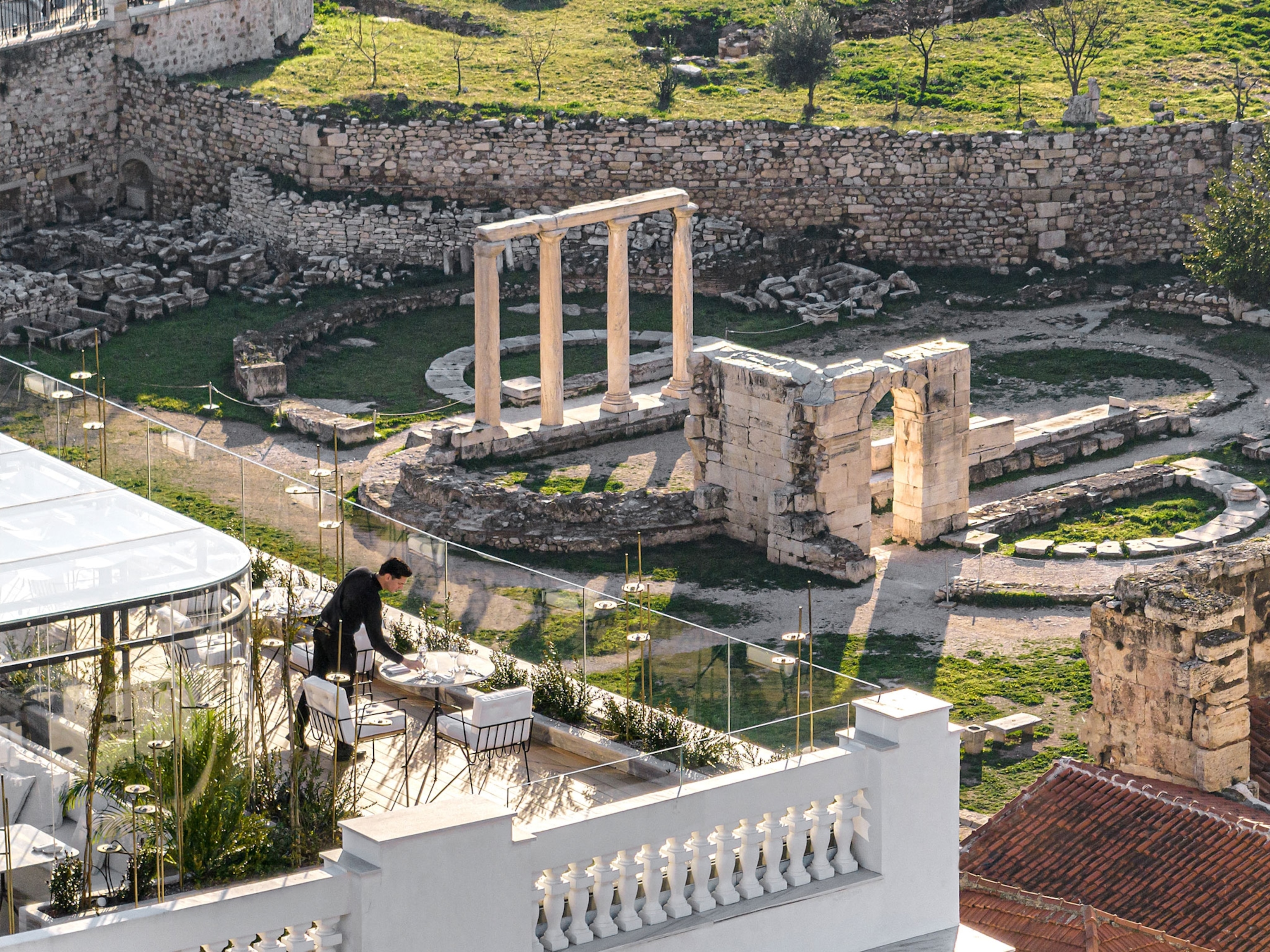How this artist created 1 stunning work of art, from 200 years of discoveries
From pharaohs and ancient cave drawings, to Mount Vesuvius and the Moai statues, Kadir Nelson's painting sums up the human story. &
Kadir Nelson is an American author and artist based in Los Angeles whose paintings have been featured on the covers of The New Yorker and National Geographic. His work can also be found in the Smithsonian’s National Portrait Gallery and National Museum of African American History and Culture, the chamber of the U.S. House of Representatives, and the International Olympic Committee headquarters in Lausanne, Switzerland.
You may recognize his iconic portraits with rich colors and modern realism from commemorative postage stamps, or even the cover of Drake’s 2013 album, Nothing Was the Same. His art has also graced the cover of Michael Jackson’s posthumous album, which was listed in the Guinness Book of Records as the largest poster in the world.
Nelson’s paintings marking the 100th anniversary of the Tulsa Race Massacre, Tulsa, and the voyage of America’s last slave ship, Flight of the Clotilda, both served as covers for National Geographic magazine. We recently spoke with Nelson to learn more about his third National Geographic cover.
What’s the story behind the cover?
Nelson says he’s drawn to projects that allow him to grow as both a person and an artist. “This particular assignment provided a really great pathway … to learn about ancient sites and discoveries from all around the world,” he says, “some of which I'd never heard of.”

In Ancient Wonders of the World, he weaves together roughly two centuries of excavations from six continents into a cohesive painting that reflects an eclectic and rich history, and tells “the greater human story.”
“I think that's one of also one of the really big things that drew me to this assignment,” he says, “because I'm very much interested in the human story and the journey of the hero. And much of what we see in ancient Egypt, through temples and the architecture and the story on the walls, is very much about the journey of the hero. That's very much what drives the work that I do.”
Nelson intentionally focuses on the discoveries—the artifacts and stories from different cultures around the world—rather than people who may have recovered them. And those discoveries, he says, are the “thin line that connects all human beings, all human stories throughout history.”
What’s inside this issue:
• These archaeological findings unlocked the stories of our ancestors
• Unearthing 100 archaeological treasures of the past
• A grave humanitarian crisis is unfolding in Ethiopia. ‘I never saw hell before, but now I have.’
• An icy world is in meltdown, as penguin population shifts signal trouble
• I’ve walked 11,000 miles from Africa to Southeast Asia. This is what I've learned.
What discoveries are on the cover?
There are multiple dimensions in Ancient Wonders of the World—so much so that Nelson created a legend to help users navigate through each one. Nelson compares the process of composing this painting to “putting a big puzzle together and figuring out how to tell this visual story in a cohesive way.”
The painting began to take shape once he established clear anchor points. Next, he created a horizon line, and from there he determined which area of the painting would be the brightest and which areas would be darker, from the Chichen Itza pyramid in Mexico to the figures on the Pompeii volcano. Nelson likened the process to a slow cooker.
“I'm pretty much using my feelings and my sense of aesthetics to cook this composition to the point where it reaches a really nice boil,” Nelson says.
He created a living, breathing work of art that can accommodate new discoveries.
Nelson began with a tale he’s fascinated with: the story of King Taharqa, a pharaoh of ancient Egypt in the kingdom of Kush. Taharqa is placed in the center of the cover, with the sun and water horizon acting as an anchor. Nelson then carefully placed about 37 of the 100 discoveries National Geographic provided around his focal point.
His favorite parts of the composition? “I really like how it feels to look at the juxtaposition of subjects in the painting,” he says. From the Titanic, to Stonehenge, to Native American stone paintings, King Tut, and China’s terra-cotta figures.
“It allows your eyes to just kind of meander through the images in the painting, so there are nice little pockets that I really like, and that's the essence of storytelling,” Nelson says. “It's like a film. A film is a series of these moments strung together, and it's kind of like our memory—the way that we think of our past, this string of stories, string of moments.”
Nelson says he hopes the reader truly experiences the cover and tries to “find something new in it and understand that the human story is relatively long.” He also hopes that the Ancient Wonders of the World will inspire others to learn more about the history of human civilization.
So, what’s next?
Nelson is currently working on a number of projects, including two books: one on the history of basketball and the other on the history of American music. “I've got my hands full,” he says.



